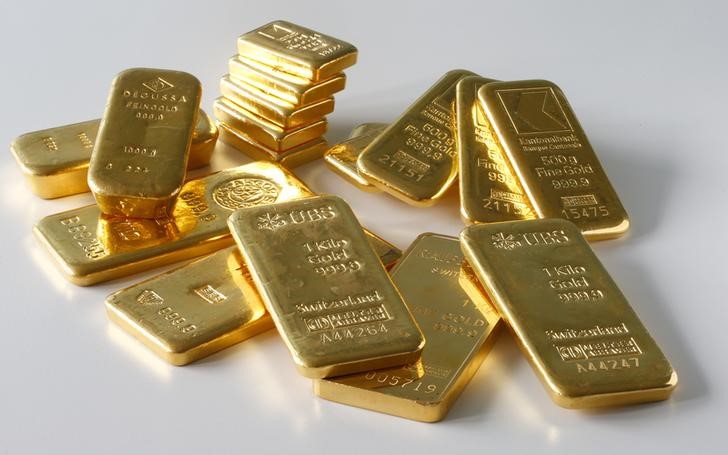By Barani Krishnan
Investing.com - Gold’s stay above $1,800 is proving tenuous, at best.
A spike in U.S. Treasury yields knocked the yellow metal off the $1,800 perch on Wednesday, barely 24 hours after it had gotten above that mark.
“For gold to avoid a selloff it needs to capture and stay above the $1800 level,” said Ed Moya, head of research for Americas at online trading platform OANDA. “Gold first needs to see lower nominal Treasury yields before investors willingly come back.”“
Gold’s bread and butter has been globally easy monetary policies and that is about to moderate, but over the next couple of quarters it could transition to an inflation hedge, but the timing of that will be tricky.”Most-active December gold on New York’s Comex settled down $12.30, or 0.7%, at $1,794.80 after moving between $1,808.45 and $1,792.35.
Renewed pressure came upon gold after yields on the benchmark U.S. 10-year Treasury note rose for the first time in four sessions, climbing 2.1% to a reading of 1.33.
Treasury yields spiked after a surprisingly strong Empire State survey that growth in manufacturing might not be as weak as initially anticipated. This was despite the Federal Reserve reporting on Wednesday that U.S. industrial production grew by a slower 0.4% in August after a 0.8% expansion in July as factory outages forced by Hurricane Ida held up output.
Gold is in some sort of an inflection point with the Fed having entered its typical blackout period ahead of its Sept. 21-22 policy meeting,
The question of when the Fed ought to taper its stimulus and raise interest rates has been hotly debated in recent months as economic recovery conflicts with a resurgence of the coronavirus’ Delta variant. Chairman Jay Powell is to hold a news conference next week after the Fed’s two-day policy meeting.
The Fed’s stimulus program and other monetary accommodation have been blamed for aggravating price pressures in the United States. The central bank has been buying $120 billion in bonds and other assets since the Covid-19 outbreak of March 2020 to support the economy. It has also been keeping interest rates at virtually zero levels for the past 18 months.
After declining 3.5% in 2020 from business shutdowns owing to Covid-19, the U.S. economy expanded robustly this year, expanding 6.5% in the second quarter, in line with the Federal Reserve’s forecast.
The Fed’s problem, however, is inflation, which has been outpacing economic growth. The Consumer Price Index expanded by 5.3% for the year to August, data showed.
The Fed’s preferred gauge for inflation - the core Personal Consumption Expenditures Index, which excludes volatile food and energy prices - rose 3.6% in the year through July, its most since 1991. The PCE Index including energy and food rose 4.2% year-on-year.
The Fed’s own target for inflation is 2% per annum.
